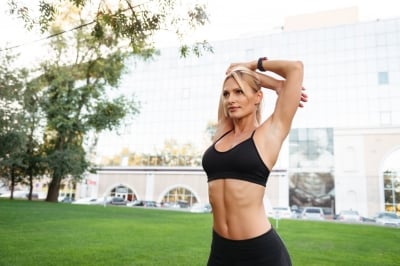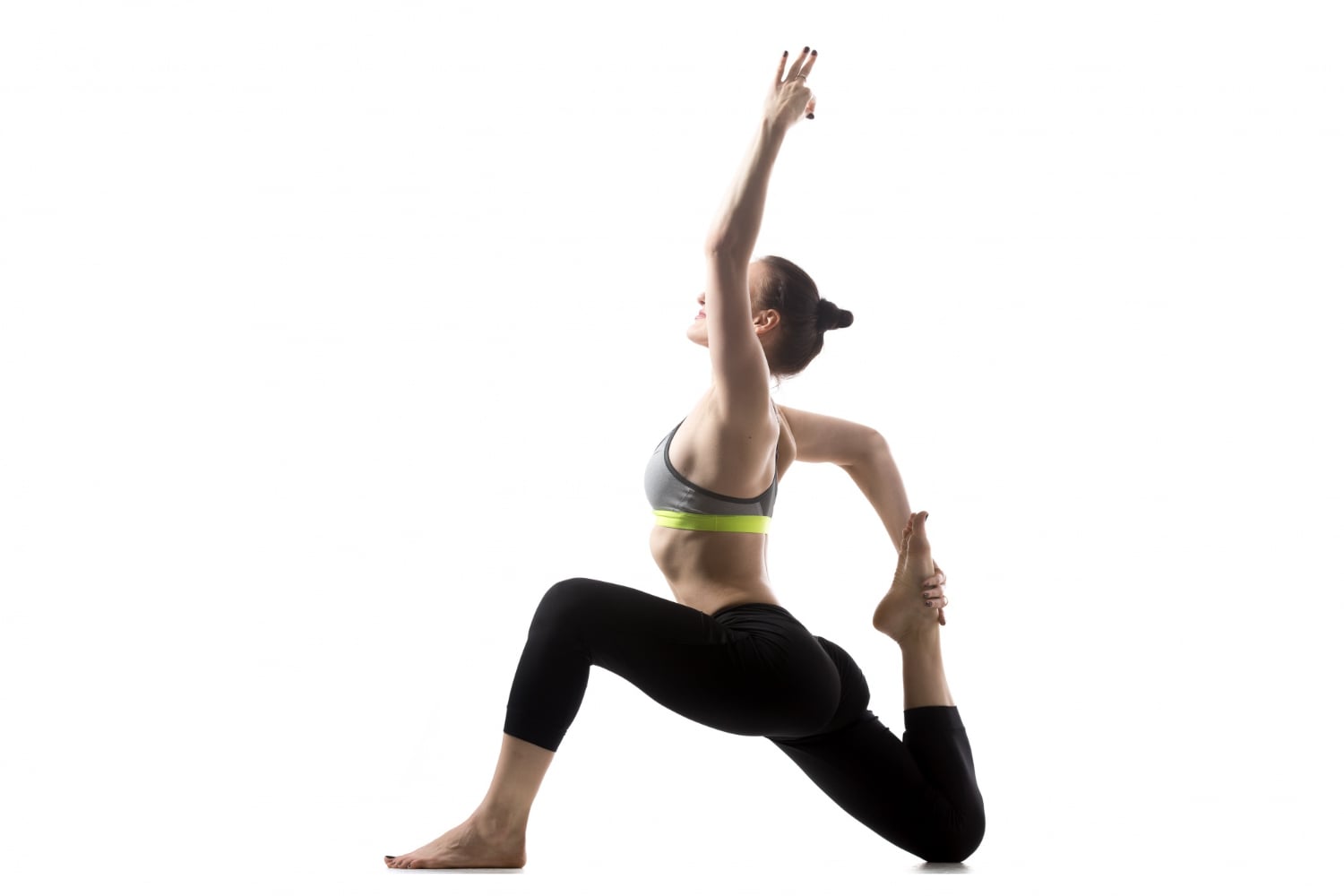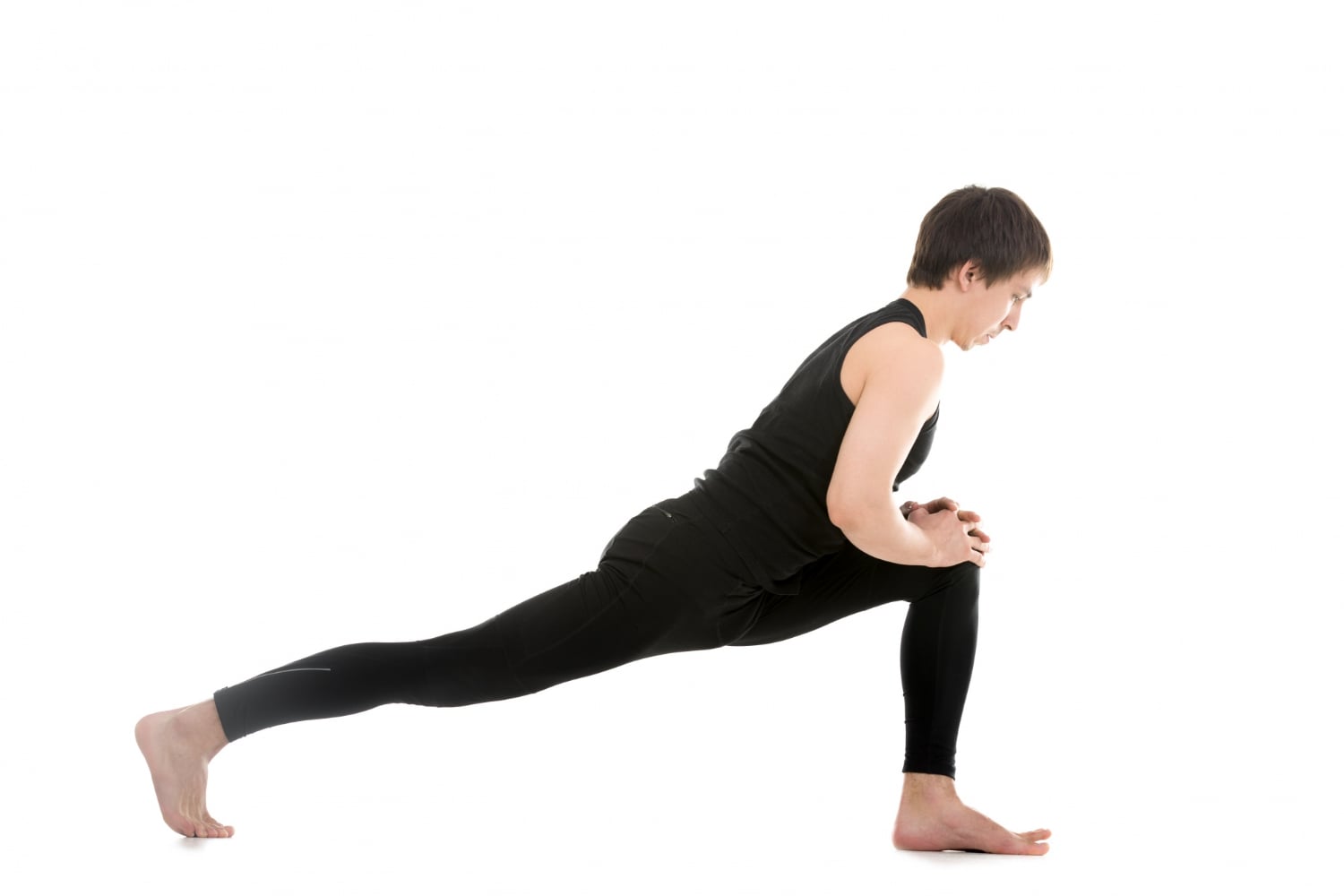Developing A Proper Warm-Up Routine


The warm-up is a crucial phase in any workout routine, offering multiple benefits, from preventing injuries to optimizing performance.
Though many understand its importance, the nuances of a perfect warm-up routine remain enigmatic to some.
Drawing from various scientific sources, this article aims to demystify the elements of a proper warm-up and guide you to achieve the best results.
Warming up—those first 10 to 20 minutes before the main workout, when you're transitioning from a state of rest to the brink of exertion. To the novice, this might seem like a perfunctory prelude or, worse, a time-wasting exercise. But those in the know, from elite athletes to gym veterans, swear by it. Why? Dive in as we delve deep into the scientific basis and compelling reasons behind the age-old ritual of warming up.
The Science Behind Warming Up
To truly grasp the importance of warming up, it’s necessary to peek under the hood and understand the physiological transitions your body undergoes.
- Increasing Core Temperature: According to research published in the Journal of Strength and Conditioning Research (2010), one of the primary purposes of a warm-up is to raise the body’s core temperature. Now, this isn't about breaking a sweat, although that might happen. Elevating the core temperature improves enzyme activity in the body. Enzymes are like the spark plugs of cellular activity, and they work more efficiently at higher temperatures. This means your metabolic reactions get a head start even before you begin the primary workout.
- Enhanced Muscle Performance: Warmer muscles are more elastic and less viscous. This isn’t just a fancy way of saying they stretch better. Warm muscles can contract more forcefully and relax more quickly, reducing the risk of overstretching and injury. Moreover, they can generate peak power and strength, ensuring that you're primed for whatever the workout throws at you.
Blood Flow and Oxygen Uptake
A study in the Journal of Manipulative and Physiological Therapeutics emphasizes another critical aspect of warming up—enhanced blood flow. Why does this matter?
- Rapid Oxygen Delivery: As your heart rate picks up during a warm-up, your cardiovascular system works overtime to ensure that oxygen-rich blood reaches the muscle tissues. Oxygen is vital for aerobic exercises, where it aids in breaking down glucose to produce energy.
- Efficient Nutrient Supply: Blood doesn’t just carry oxygen. It's like the body's delivery system, supplying the muscles with essential nutrients. An effective warm-up ensures that your muscles aren't starved when they need nourishment the most.
- Waste Removal: Just as important as nutrient supply is the efficient removal of waste products, like lactic acid, which can accumulate during exercise. A good warm-up primes the body for this cleanup, preventing the early onset of fatigue.
Range of Motion and Joint Health
Back to the Journal of Strength and Conditioning Research (2018). Another nugget of wisdom it provides is how warm-ups affect our joints and range of motion.
- Synovial Fluid Activation: Think of synovial fluid as the body's natural lubricant for the joints. Warming up stimulates its production, ensuring smooth, frictionless joint movement. This is particularly vital for exercises that demand a broad range of motion, where the risk of joint-related injuries is high.
- Ligament and Tendon Flexibility: Ligaments and tendons, much like muscles, become more flexible when warm. This added elasticity means they can handle more tension and are less prone to tears or ruptures.
Mental Preparedness and Injury Prevention
Warm-ups aren't just about the physical. There's a psychological dimension that's equally crucial.
- Mental Acclimatization: Transitioning suddenly from a resting state to high-intensity workouts can be jarring. A warm-up serves as a bridge, allowing you to mentally prepare for the challenge ahead. It provides a space for focus, where you can visualize the workout, set goals, and get into the 'zone.'
- Injury Prevention: This can't be stressed enough. An abrupt start can shock the muscles, leading to strains, sprains, or even more severe injuries. Warming up gradually awakens the body, ensuring that the muscles and joints are ready for the stressors of the primary workout.
It's Not Just About The Exercise
It might seem counterintuitive, but a good warm-up isn’t just about prepping for the workout. It sets the tone for the entire fitness session, including the cooldown and recovery phase. By ensuring efficient oxygen delivery and waste removal from the get-go, warm-ups can also aid in faster recovery post-workout.
Conclusion
In the fitness journey, it's the small things that often make a big difference. Warming up might occupy just a fraction of your workout time, but its benefits are disproportionate to its duration. It's the foundation on which the edifice of a safe, effective, and fulfilling workout experience is built. Remember, muscles, much like engines, need to be primed before they can deliver peak performance. And a warm-up ensures just that. Whether you’re an athlete or someone just starting on the fitness journey, never underestimate the power of a proper warm-up.
Warming up is not a one-size-fits-all process. Depending on your workout goals, current fitness level, and even the day's mood, the ideal warm-up routine can differ. The good news? Science offers us a roadmap, providing clarity on the various types of warm-ups and their respective benefits. Let's journey through this warm-up spectrum, gleaning insights from leading scientific studies to help you tailor the best preparatory routine for your needs.
Active Warm-Up
What is it?
An active warm-up is, quite simply, warming up through movement. It is one of the most universally recommended methods, given its dual advantage of cardiovascular and muscular activation.
The Science:
The Journal of Strength and Conditioning Research (2010) outlines that active warm-ups can increase muscle temperature, resulting in enhanced muscle efficiency and reduced injury risk. This is because active movements increase blood flow and oxygen delivery.
Examples:
Jogging, cycling, swimming, or even a brisk walk.
Benefits:
- Elevation in heart rate prepares the cardiovascular system for subsequent activity.
- Engages major muscle groups, priming them for more intensive workouts.
- Stimulates respiratory system, ensuring efficient oxygen intake.
Ballistic Warm-Up
What is it?
This might sound technical, but ballistic warm-ups involve dynamic, rapid movements, pushing a joint through its entire range of motion.
The Science:
Ballistic movements, when performed correctly, can stimulate the nervous system, improving neuromuscular coordination. This, in turn, can enhance muscle activation and overall athletic performance, as detailed in the Journal of Strength and Conditioning Research (2018).
Examples:
Leg swings, arm circles, high knees, or butt kicks.
Benefits:
- Prepares muscles for quick, explosive activities.
- Increases flexibility and joint mobility.
- Boosts coordination and reaction times, vital for sports and high-intensity workouts.
Passive Warm-Up
What is it?
As the name suggests, passive warm-ups involve external aids, like heat packs or saunas, to increase muscle and core temperature without any significant energy expenditure.
The Science:
While passive warm-ups might not offer the cardiovascular benefits of its active counterpart, they still effectively raise the muscle temperature. This, as per the Journal of Manipulative and Physiological Therapeutics, can improve muscle elasticity and function.
Examples:
Heat packs, steam rooms, saunas, or warm baths.
Benefits:
- Ideal for individuals who might have certain restrictions that prevent them from indulging in vigorous activity.
- Prepares muscles for stretching or low-intensity exercises.
- Can be therapeutic, providing relaxation before the main workout.
Static Stretching
What is it?
This involves stretching a muscle group to its maximum and holding the position for a prolonged period.
The Science:
Traditionally, static stretching was the go-to warm-up method for many. However, recent research, including that from the Journal of Strength and Conditioning Research (2018), indicates that static stretching alone might not be the most effective warm-up method. This is because excessive static stretching before an intense workout can temporarily weaken the muscles.
Examples:
Hamstring stretch, calf stretch, or quad stretch.
Benefits (when combined with other warm-up methods):
- Enhances flexibility and range of motion.
- Can reduce post-workout muscle soreness.
- Mentally relaxing, aiding focus and concentration.
Creating a Hybrid Warm-Up
In a real-world scenario, rarely would you rely on just one of these methods. Instead, the best warm-ups are often hybrid, combining elements of multiple techniques to ensure comprehensive preparation.
For instance:
Strength Training: Begin with 5 minutes of active warm-up (like jogging), followed by ballistic movements targeting the muscles you're about to train, and conclude with brief static stretches to improve flexibility.
Aerobic Activities: An extended active warm-up, gradually increasing in intensity, would be ideal. If you're about to engage in a long run, start with a brisk walk, transitioning into a jog before setting into your run's pace.
Sports: A combination of active and ballistic warm-ups can be great. If you're about to play soccer, for instance, a jog around the field combined with dynamic leg stretches and jumps can be effective.
Conclusion
The beauty of the warm-up lies in its adaptability. By understanding the core principles of each method and its intended benefits, you can craft a personalized routine that resonates with your body's needs. Whether you're about to lift heavy, embark on an endurance challenge, or dance the night away, the right warm-up ensures you kick things off on the right note. Remember, it's the preamble to your workout story, and setting the right tone ensures a fulfilling, injury-free narrative.
Crafting an effective warm-up isn't about haphazardly stringing together a few exercises. It requires thought, planning, and an understanding of your body's needs and the goals of the day's workout. A well-designed warm-up acts as a bridge, seamlessly taking you from a state of rest to the brink of intense physical activity. Let's lay down the blueprint for constructing this bridge.
Identify Your Goals
Your warm-up should be a reflection of the workout that follows.
- Strength Training: Your focus should be on activating the muscle groups that will be targeted. This means using lighter weights to mimic the movements of your main session.
- Cardio: Aim for a gradual increase in heart rate. This ensures that the cardiovascular system isn't shocked once you dive into the primary activity.
- Flexibility or Yoga: Prioritize elongating the muscles and increasing joint mobility.
Duration Matters
Warm-ups are typically between 10-20 minutes. However, the exact duration can be influenced by various factors:
- Intensity of the Main Workout: A high-intensity workout like HIIT or heavy lifting might necessitate a longer warm-up to ensure complete readiness.
- Ambient Temperature: On colder days, you might need a lengthier warm-up to raise the muscle temperature.
- Personal Needs: Some individuals, especially those returning after a hiatus or with pre-existing conditions, might benefit from extended warm-ups.
Start General, Finish Specific
An effective warm-up begins by engaging the body as a whole and then narrows down to the specifics of the impending workout.
General Warm-Up: This includes activities that raise the overall body temperature and heart rate. Think of jogging, skipping, or cycling.
Specific Warm-Up: This phase hones in on the muscle groups and movements relevant to the main workout. For instance, if you're planning a squat session, air squats or lunges would be apt.
Incorporate Multiple Warm-Up Types
Drawing from our previous section, combine elements from the different warm-up types:
- Active Warm-Up: Almost always beneficial, irrespective of the impending workout.
- Ballistic Warm-Up: If your main workout involves dynamic or explosive movements, incorporating this is a must.
- Passive Warm-Up: Can be especially helpful if you're training in a cold environment or need muscle relaxation.
- Static Stretching: Use sparingly and in combination with other methods. Ideally, save prolonged static stretches for the post-workout cooldown.
Mind the Intensity
The Journal of Strength and Conditioning Research (2010) underscores the importance of progressively increasing warm-up intensity. Starting slow allows the body to adjust, minimizing the risk of injury or undue strain.
Engage the Mind
While the physiological benefits of warming up are often emphasized, it's vital to remember the psychological dimension. Use the warm-up as a time to visualize the upcoming session, mentally rehearsing movements, and setting intentions.
Flexibility is Key
Just as with any aspect of fitness, adaptability is crucial. If, on a particular day, a part of your body feels especially tight or strained, don't hesitate to spend extra time warming it up. Conversely, if you're feeling particularly limber and ready, it might be okay to slightly trim the warm-up (while still ensuring you're adequately prepared).
Hydration and Breath
Hydrating before you begin ensures that the increased blood flow during warm-up efficiently transports nutrients and oxygen. Additionally, focus on your breathing. Deep, rhythmic breaths can increase oxygen intake and help in mental preparation.
Sample Warm-Up Routines
- For a Leg Day Workout:
- 5-minute brisk walk or jog.
- Leg swings (both front-to-back and side-to-side).
- Light lunges or air squats.
- Brief static stretches for hamstrings, quads, and calves.
- Visualization and mental prep.
- For a Full-body HIIT Session:
- 5-minute cycling or skipping.
- Arm circles, high knees, and quick torso rotations.
- Mimic a few HIIT movements at a lower intensity.
- Deep breathing and focus.
Conclusion
The importance of a proper warm-up cannot be overstated. It's the preliminary chapter that sets the tone for the entire workout narrative. By understanding your body's needs and the specific demands of the upcoming session, you can craft a warm-up that's not just a ritual, but an integral part of the fitness journey. As you lace up your shoes and prepare to embark on that journey, always remember: the right start can make all the difference.
The Prelude to Your Fitness Symphony

In the grand orchestra of fitness, warm-ups often play the role of the prelude. They might not be the main attraction, but without them, the entire symphony can fall out of tune. If you've ever been to a live music performance, the musicians don't just walk on stage and start the main piece. They tune their instruments, test a few notes, and ensure everything is in harmony. Similarly, your body requires this 'tuning' process to perform optimally, and warm-ups offer just that.
Scientific studies have constantly underlined the significance of warming up. The Journal of Strength and Conditioning Research (2010) not only points to enhanced physical performance post a warm-up but also emphasizes injury prevention. By raising muscle temperature, warm-ups enhance muscle elasticity, thereby reducing the risk of strains or pulls. Think of it as preheating an oven before baking – it ensures even cooking and reduces the risk of undercooking or overcooking.
Furthermore, as highlighted by the Journal of Manipulative and Physiological Therapeutics, a well-curated warm-up can optimize muscle function. This is akin to revving a car engine before a race – you're ensuring that all parts are working in tandem, ready to fire on all cylinders once the race begins.
Additionally, there's more to warm-ups than just the physical dimension.

The psychological benefits are equally compelling. Warming up is a sacred time – a bridge between the humdrum of daily life and the intensity of a workout. It offers a brief oasis of focus, allowing you to mentally transition into the workout zone. By visualizing your session, setting goals, and mentally rehearsing movements during the warm-up, you're programming your mind for success.
This brings us to the golden question: With all these advantages, why do some still skip warm-ups? Perhaps, in the race to chase results, the journey's beginning seems inconsequential to some. But as any seasoned athlete or fitness professional would attest, neglecting the warm-up is akin to neglecting the foundation of a building. No matter how impressive the structure might appear, without a solid foundation, its integrity is compromised.
In the evolving world of fitness, where trends come and go, the timeless importance of warm-ups remains unchanged. From ancient Olympians to modern-day sports stars, the ritual of preparation has always been revered. So, as you gear up for your next session, pause for a moment. Embrace the warm-up not as a mere formality, but as the essential prologue to your fitness story. For in this prologue lies the promise of a safer, more effective, and ultimately, a more fulfilling workout chapter. Always remember, the journey of a thousand reps begins with a single warm-up move. Embrace it. Celebrate it. And let the fitness symphony play on.

